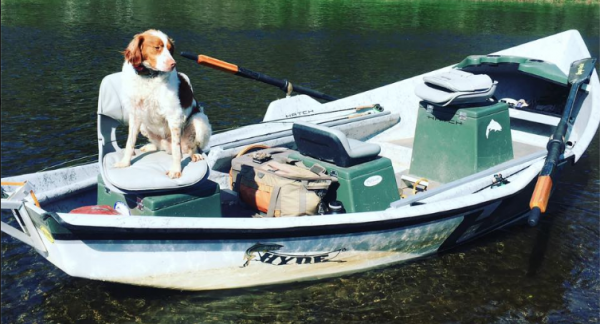By Patrick Straub for Explore Big Sky
[dropcap]O[/dropcap]ne of our customers the other day asked about shuttle services on the Yellowstone River. I was fresh off the slopes on a powder day—floating a trout river was the last thing on my thawing-out mind—but I also found three of our guides in the shop replaying the previous day’s float on the Upper Madison. Ready or not, it’s the time of year to consider floating.
Take a map and draw a 100-mile radius from our trout-centric home and opportunities to float number in the dozens. Increase that radius 50 miles and that number triples—and floatable rivers are as varied as the watercraft available to float them. Here’s a little help deciphering what is the best choice for you.

Rigged and ready… Photo by Dapra
Know your needs and wants. The best way to be happy with your boat is to have realistic expectations for its use. Brainstorm where you’ll use your boat, when you’ll take it out and who will be using it. If you’ll be the only one casting a line and you only fish in summer, you might consider a single-person float tube or pontoon. If you have a family or know your fishing buddies will come along and be willing to pay for gas and shuttles, consider a larger boat. There is an ideal boat out there for you, but an honest look in the mirror is the first step to boat-owning happiness.
Single-person float tubes, rafts or pontoons. These small boats can be easily carried by one person, and are often packable. Float tubes and single-person pontoon boats are ideal if you plan to fish smaller ponds, lakes and slow-flowing rivers. On ponds and lakes, fishing and floating can be done simultaneously, but on a river with heavy currents and obstructions like the Upper Madison, these boats are best used for transportation—getting from one spot to the next to wade-fish.


